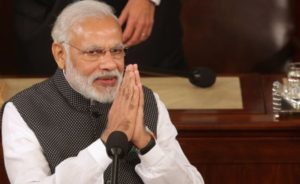After three years as Prime Minister, Mr. Modi has several achievements to his credit which have long term and far reaching implications for India. However, his governance is not without blemishes, which have been mostly caused due to the acts of commission and omission by his party men.
The pledged critics of Mr. Modi have been criticizing him for not solving the problem of joblessness in India and say that he has not managed to create job opportunities.
There are some schemes such as Swachh Bharat which is yet to make a significant impact in India. This has been mainly due to the poor governance style in the municipal administration and local bodies in several states. Further, the attitude of the people towards maintaining clean surroundings also leaves much to be desired. Here, the battle has to be fought in the minds and hearts of every Indian. Certainly, this is a scheme that would take a long time to get satisfactory results and Mr. Modi cannot be criticized for this.
Another criticism by his critics is that Mr. Modi’s governance has not been able to wipe out corruption in India. While Mr. Modi has certainly ensured that the central government under his command and his ministers would not indulge in corrupt practices, this is not so in the case of state administration which is not under Mr. Modi’s direct control. Like Swachh Bharat campaign the anti-corruption campaign in India is bound to be a long drawn affair since there is little visible resistance to corruption amongst the people. The corrupt elements in government administration feel emboldened as most people readily pay bribe money when demanded or fail to take pains to resist bribe demand and face the consequences. The lack of sacrifice quality in the mind of the people to fight against corruption is conspicuous and evident.
As part of his strategy to combat corruption, Mr. Modi launched demonetization, GST, Benami law and digital program. Several benefits of welfare schemes for the poor people are being extended by bank transaction, thus avoiding siphoning away with the funds by government officials and middle men. While such plans are laudable, still the common man is yet to feel the impact of this anti-corruption drive.
Mr. Modi launched Start up India project, Make in India scheme and Skill development program as part of his strategy to promote growth in industrial and services sector at small and medium scale level. Such projects were intended not only to promote economic growth but also generate employment opportunities for the youth, who constitute now more than 50% of the national population.
Such meaningful schemes have not taken off to the level needed mainly due to lack of capable leadership at the ministry level. There is a number of bottlenecks which are yet to be sorted out.
Similarly, the Clean Ganga Program has also not seen any significant improvement which is one of Mr. Modi’s pet projects.
The present cabinet reshuffle shows that Mr. Modi is well aware of these pitfalls and understands that these issues have to be sorted out as early as possible and as best as possible.
Such challenging targets can be achieved only by having efficient, honest and capable ministers and bureaucrats. Apparently, Mr. Modi has carefully evaluated the performance of his colleagues and dropped a few ministers, selected a few and changed the portfolio of a few to turn out better performance in the next two years. He has done this within the limitations of political expediency and the talent available to him.
Certainly, Mr. Modi’s cabinet reshuffle gives hope for the country men and reinforces the view of a large segment of the population that Mr. Modi will leave no stone unturned to provide governance that would meet the needs and expectations of the people.

